An organizational structure diagram is a fundamental tool that outlines the workflow, department setup, and functional planning of a company. Common organizational structures include centralized, decentralized, linear, and matrix formats. Many businesses suffer from inefficiencies and poor decision-making due to an ill-conceived organizational structure. Creating an organizational structure diagram helps visualize and assess the company's setup, allowing for better arrangement of positions and departments, thus streamlining operations.
Boardmix is a professional online drawing tool that excels in creating organizational structure diagrams. Its features mainly include:
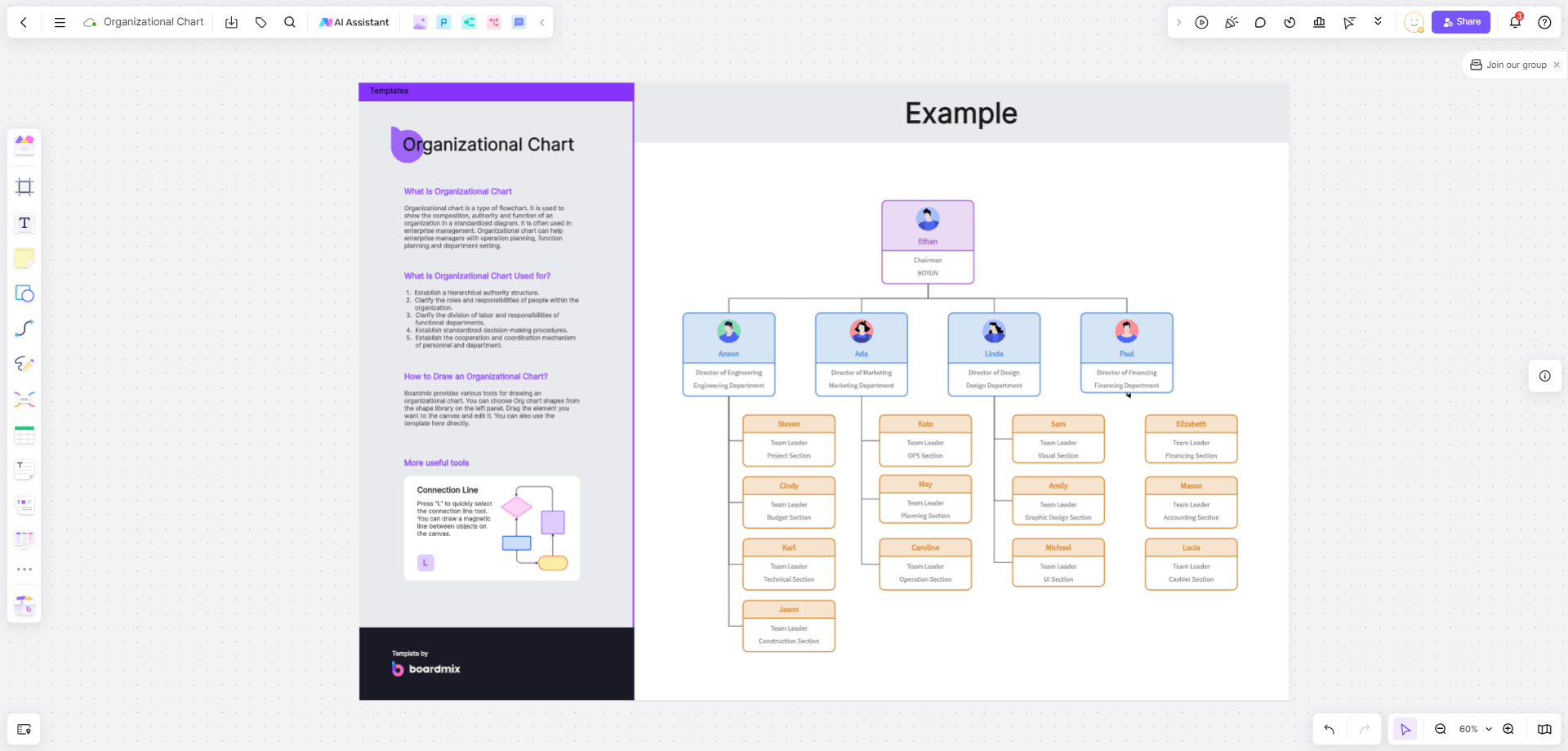
Diverse Drawing Tools: Boardmix provides a variety of drawing tools, including professional symbols for organizational charts, different styles of lines, shapes, and text boxes. This flexibility allows for the creation of various elements like block diagrams, arrows, and connectors.
Template Library: With an extensive library of templates, including various types of organizational structure diagrams, users can quickly select and use these templates to meet their needs, saving design time and effort.
Unlimited Canvas and Free Layout: Boardmix offers an unlimited canvas space, enabling users to arrange layouts freely without constraints.
Rich Color and Style: Boardmix allows users to customize the colors and styles of shapes and lines, adding a personalized touch to their organizational charts.
Auto-Save and Cloud Storage: Boardmix's auto-save feature ensures that all changes are saved in real time, while cloud storage allows for secure access and sharing from anywhere.
Collaboration and One-Click Export: Boardmix supports real-time collaboration, inviting multiple users to edit simultaneously. Additionally, completed diagrams can be exported with a single click.
1. Linear Organizational Structure Diagram

A linear organizational structure is suitable for operational organizations, whether for routine operations or projects. It divides personnel into fixed teams based on different departments or business lines, with minimal interaction between teams.
2. Functional Organizational Structure Diagram
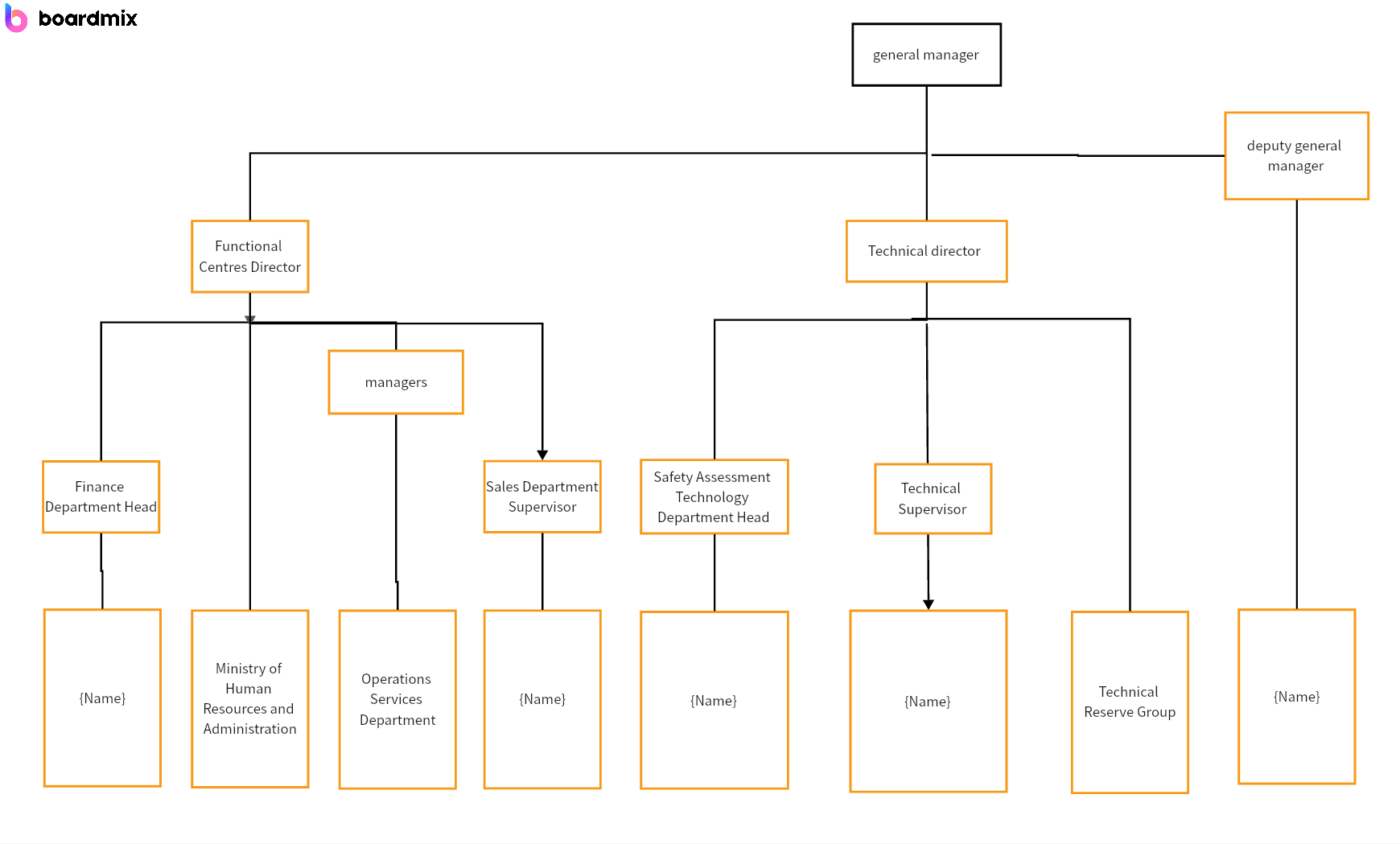
In a functional organizational structure, horizontal functional departments provide guidance, supervision, and management to other departments and offer advisory opinions to senior management. Common functional departments include HR, administration, and finance. This structure enables specialized management and decision-making support.
3. Line-Staff Organizational Structure
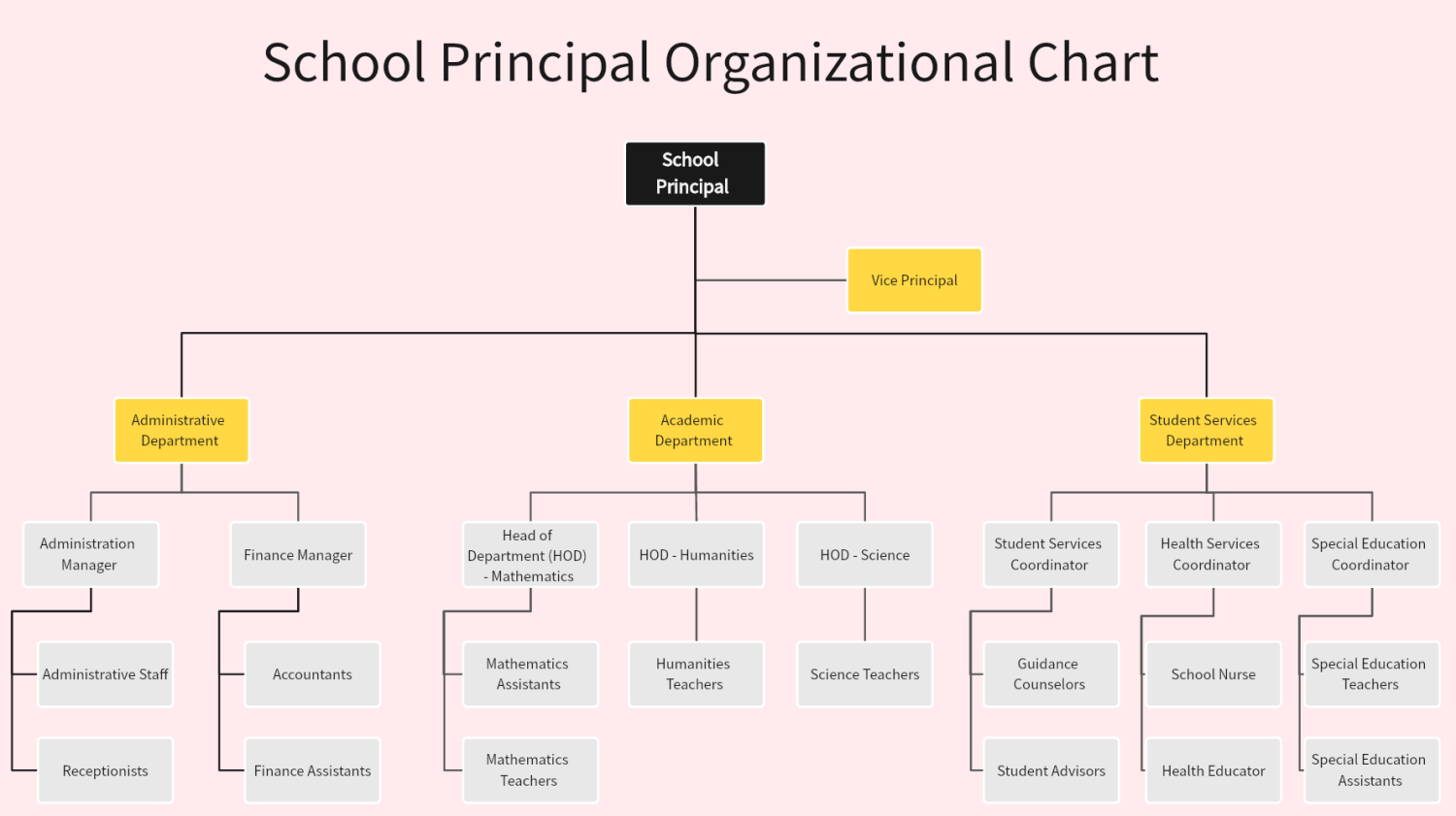
Combining linear and functional structures results in a line-staff structure, often used in medium to large organizations. It incorporates functional departments under each level of management to act as advisors, combining unified command with professional guidance.
4. Divisional Organizational Structure Diagram
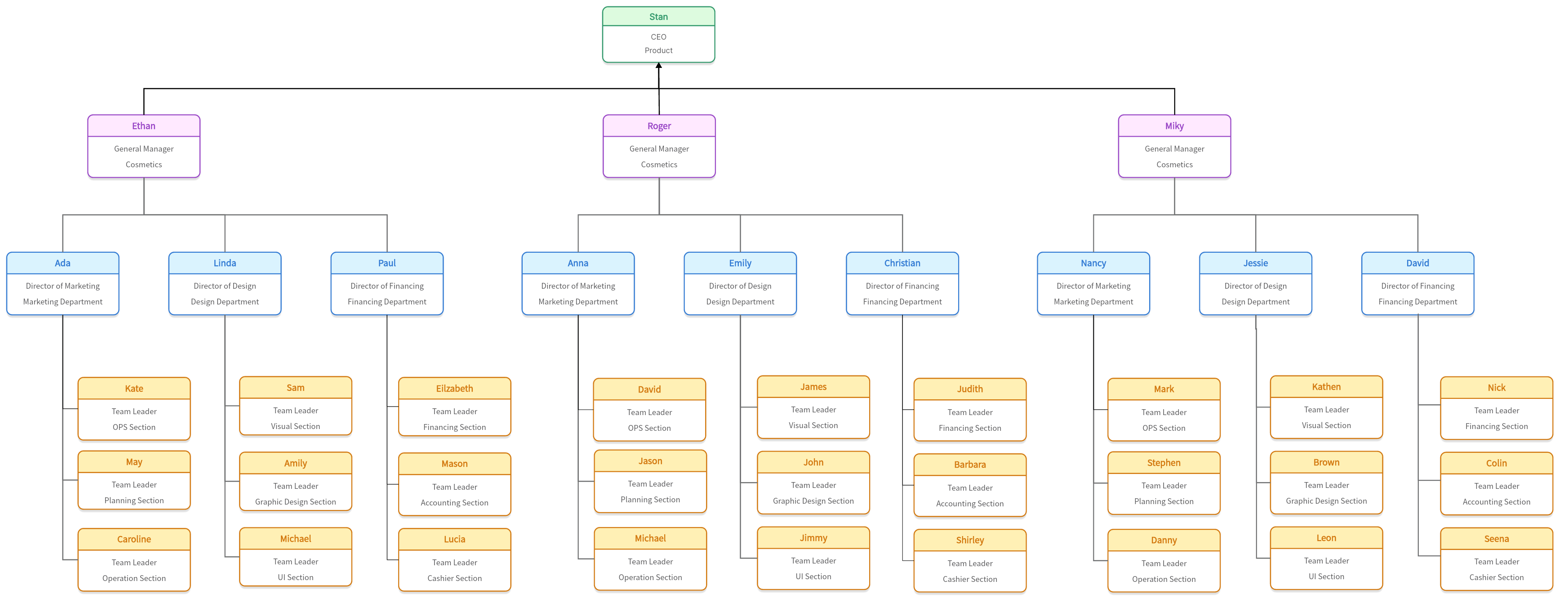
As organizations grow, a divisional structure can enhance efficiency by decentralizing management. Divisions are responsible for their profit and loss, fostering leadership creativity. Each division handles everything from product design to sales independently, while the headquarters retains control over personnel decisions, budget oversight, and overall supervision.
The divisional organizational structure is a form of hierarchical management, hierarchical accounting, and self-financing. That means a company is divided into several business units by region or product category, from product design, raw material procurement, cost accounting, and product manufacturing, to product sales, are all responsible for the business departments and affiliated factories, and implement separate accounting and independent operations. The company headquarters only retains the power of personnel decision-making, budget control, and supervision, and controls business units through indicators such as profits.
5. Chain Organizational Structure Diagram
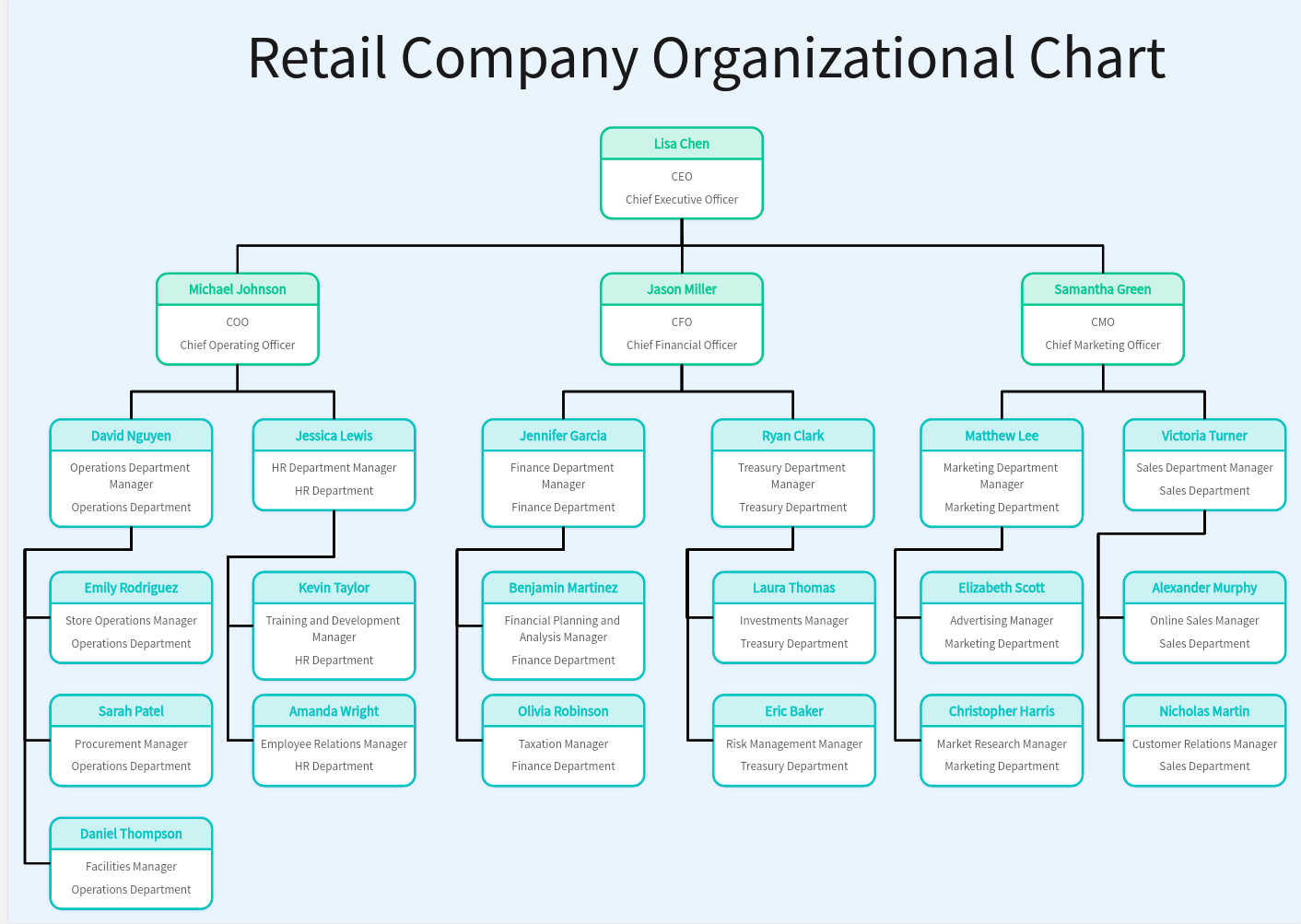
Chain management is a highly efficient business model with advanced organizational structures and economies of scale. It fosters a win-win scenario among suppliers, chain companies, and customers, often leading to higher efficiency for the enterprise.
These are the five common types of organizational structure diagrams. The choice of structure depends on specific needs and circumstances.
For creating organizational structure diagrams, we recommend using the Boardmix online collaboration whiteboard. This versatile tool can create mind maps, flowcharts, concept maps, fishbone diagrams, organizational charts, timelines, and more. It supports creative elements like hand drawing and multimedia. Once completed, diagrams can be seamlessly converted into PPT presentations, eliminating the hassle of using multiple software. Whether for business or personal use, Boardmix is sure to impress.








